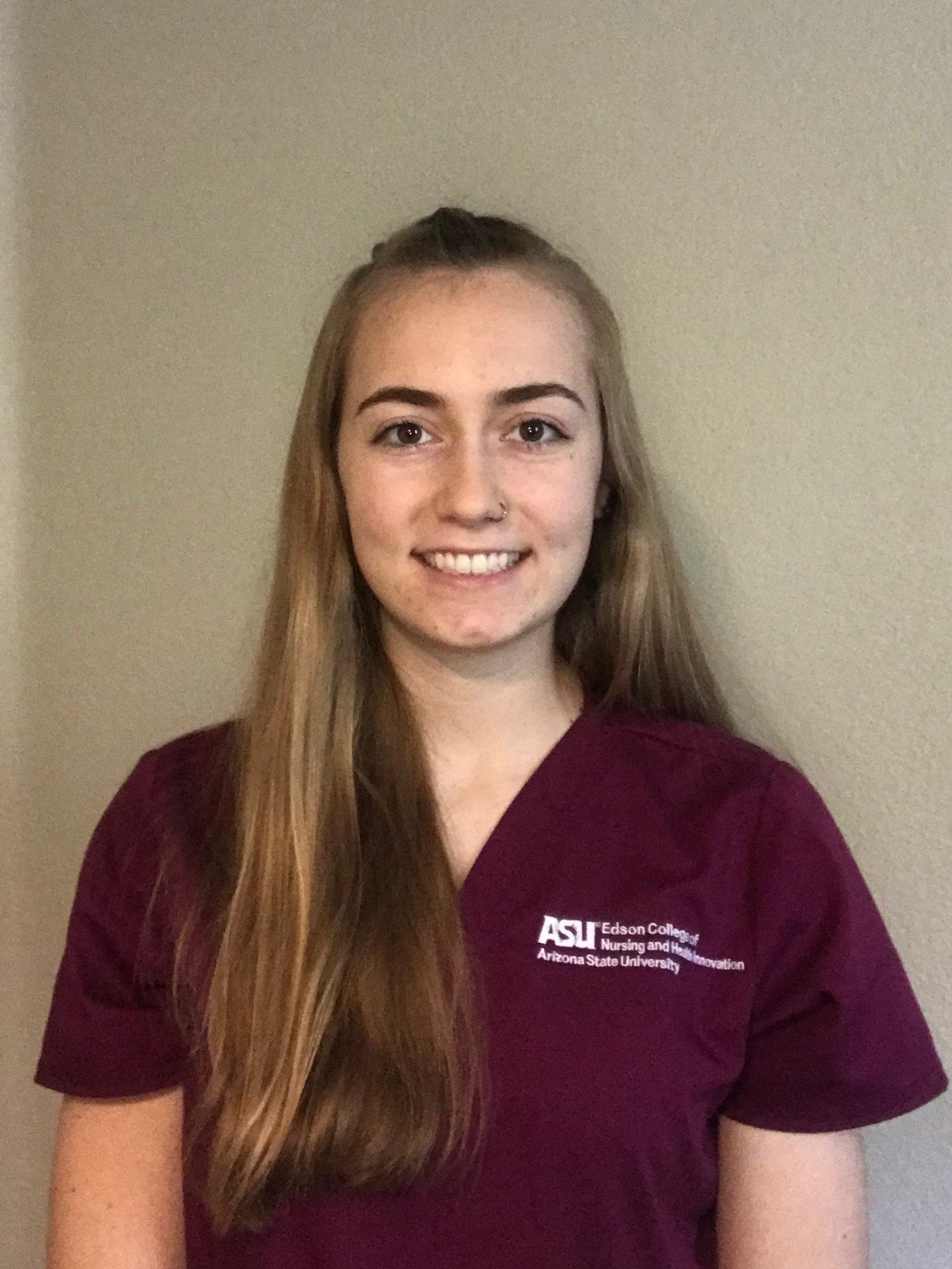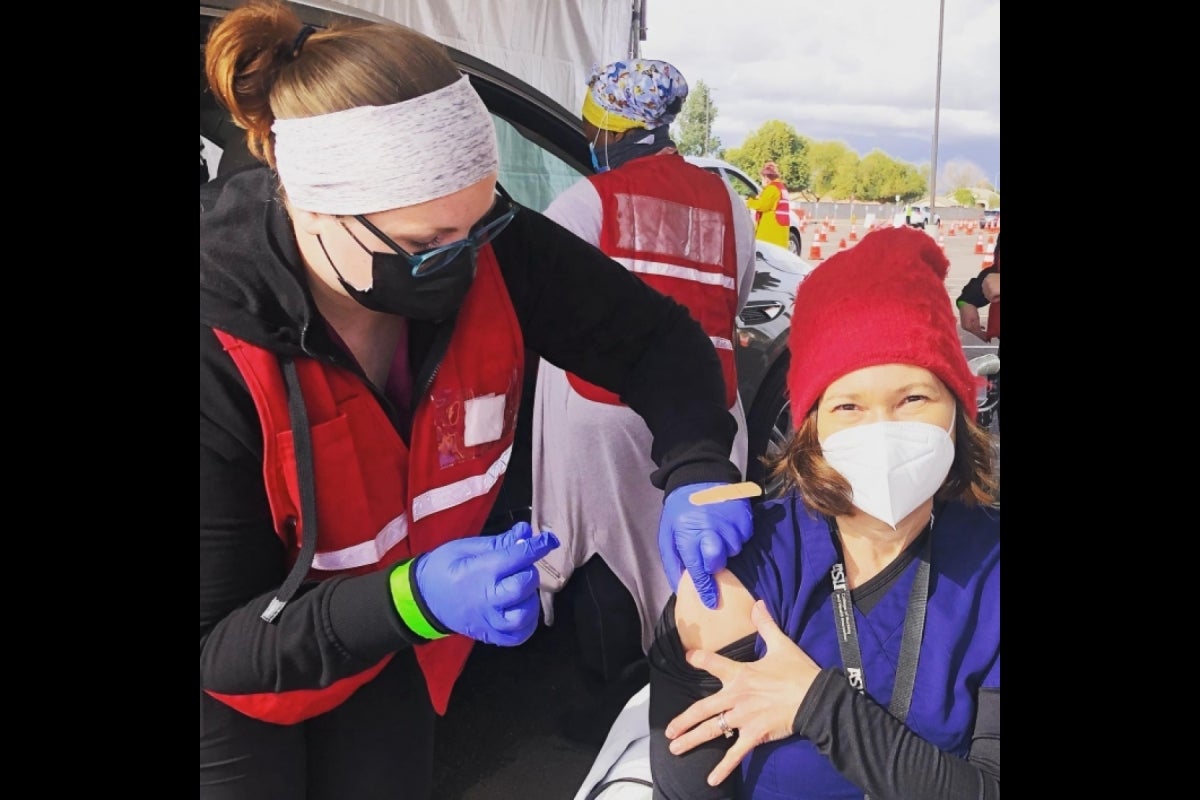COVID-19 vaccine distribution offers experience, insight for ASU nursing students

Edson College nursing students have had the opportunity to actively participate in the state's public health response to the pandemic.
Since the beginning of the pandemic, Arizona State University has played an integral part in the state’s public health response to the novel coronavirus. From developing and administering a saliva-based COVID-19 test to contact tracing and, more recently, vaccine distribution and site management.
As part of the wider university efforts on campus and in the community, students have had unprecedented opportunities to get involved and gain hands-on experience, too.
So far, more than 400 hundred students in ASU’s Edson College of Nursing and Health Innovation have participated in sample collection at university COVID-19 testing sites and have given thousands of COVID-19 vaccines to Arizonans at various distribution sites around the valley.
“It’s wonderful to be a part of the solution and to feel as though you’re making a difference to assist in any way that you can,” said Salina Bednarek, director of Edson College’s prelicensure programs. “We know the workforce here has been incredibly taxed, and being extra hands for these nurses and for all of our health care partners has been so meaningful. This has been an incredibly rewarding experience for our students.”
It’s also been an enlightening one, particularly for Brooke Taylor. A junior studying nursing at Edson College, Taylor has participated in vaccine distribution as part of her clinical experiences for course credits.
In late February, Taylor and seven other nursing students were at the Dignity Southeast Pod at Chandler-Gilbert Community College doing vaccinations, checking people in and helping in any way they could that day.
“It was great to be there, to interact with the public, to actually put into practice what we’re learning in class and to be able to provide such an important service by giving them the COVID-19 vaccine,” Taylor said.
Brooke Taylor, junior nursing student
During one such experience, Taylor says the day was flowing nicely and after a break for lunch, she was getting ready to return to vaccinating people. That’s when she heard a call for someone who knows American Sign Language.
“I turned around and could see that people were gesturing in their car, and I could tell they couldn’t hear,” she said.
Taylor didn’t hesitate, “I just signed to them and said, ‘Do you need someone who knows sign language?’ And they were like, ‘Yeah,’ and so I went over and was able to help check them in and I was able to give her the vaccine as well, which was pretty cool.”
Her willingness to immediately step up to help this family did not go unnoticed.
Clinical Instructor Christine Rozsavolgyi, who was overseeing the group of students that day, said watching this in real time filled her with pride.
“I watched the couple’s faces light up that someone was able to communicate with them who truly cares. It was especially touching because Brooke jumped in without hesitation, whereas some students tend to be shyer. I can honestly say she made a real impact on the patients, and the staff was very impressed as well,” said Rozsavolgyi.
For Taylor, the moment didn’t seem that significant at first. As the child of a deaf adult, she grew up signing. ASL was her first language, so when she saw the couple struggling to communicate she didn’t think twice about trying to help.
“Initially it was just kind of like, whatever, I don’t see what the big deal is. I know ASL and I’m used to translating for my mom, especially in health care situations. So of course I was going to do what I could to help. But then, a few minutes later, I turn around and I’m relying on family members to translate Spanish for me,” she said.
What Taylor recognized after those back-to-back experiences was that even though family members can translate for health care workers, they shouldn’t have to. These quick interactions demonstrated up close the lack of accessibility some families face when seeking care and the need for solutions.
“This is just one example of a barrier to health care for people in terms of communication, and this is only one population and there’s so many out there. So we, as future nurses and health care providers, need to be mindful of that and try to learn together how to approach these kinds of situations,” Taylor said.
She knows there are groups advocating for accessibility across the health care system and is grateful for those efforts, which will help both her mom and her future patients.
One of the ways Taylor is working toward a solution is to be an even more active ally through deepening her knowledge of the community she will eventually serve.
“Spanish is actually a language I’ve been wanting to learn, so after this experience, I went home and downloaded Duolingo to help me start on that,” she said.
And while she knows becoming trilingual won’t solve everyone’s challenges when it comes to accessing health care, it will improve the quality of care she’ll be able to provide for some and that’s a step in the right direction.
More Health and medicine
Leading the way in wellness: ASU highlighted in The Princeton Review's 2025 Mental Health Services Honor Roll
Being a college student isn’t easy — navigating new routines, people and places can be a challenge, especially if the right…
New Indigenous health dashboard offers robust database for scholars
By Nicole Greason and Kimberly Linn A team at Arizona State University’s College of Health Solutions and …
College of Health Solutions program doing its part during Salute to Service
It wasn’t always easy for Marine veteran Chuck Hale when he first returned to civilian life. But he’ll never forget the help he…




